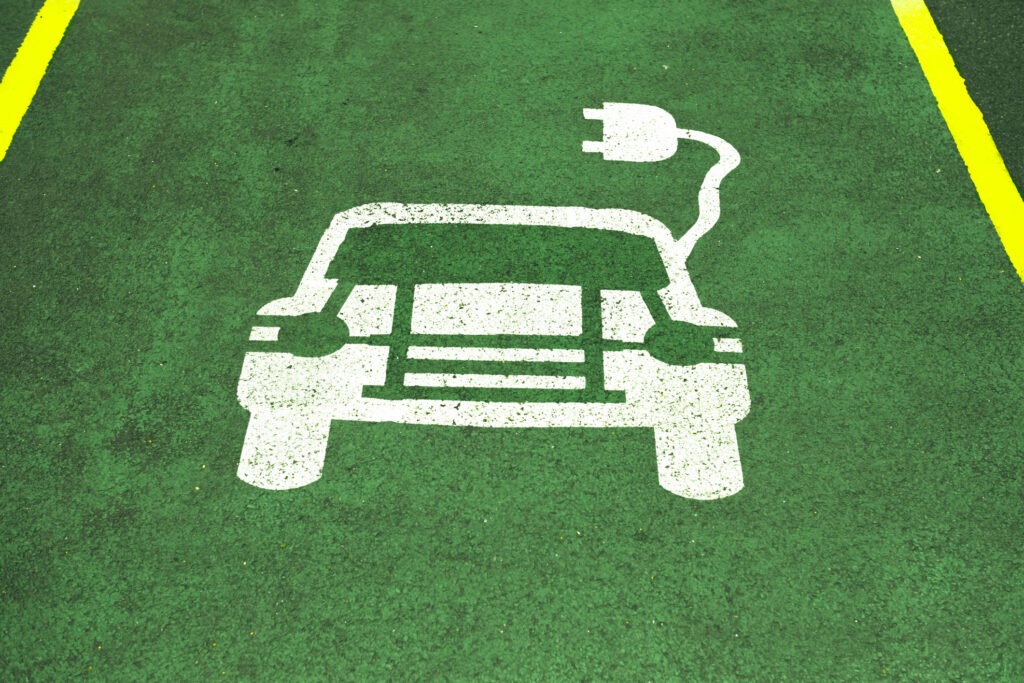Plug-in vehicles account for almost a quarter of Europe’s new-car market in May
17 July 2023

The electrification of Europe’s new-car market continued in May as the technology increased its market share. José Pontes, data director at EV-volumes.com, considers the latest figures.
Europe saw 253,779 plug-in vehicles registered in May, marking a 38% year-on-year increase. But, the overall market also grew quickly, up 18.2% with nearly a million units registered across the continent.
Plug-in vehicles, made up of battery-electric vehicles (BEVs) and plug-in hybrids (PHEVs), took a 23% market share during the month. When breaking this down, BEVs made up 15%, while PHEVs accounted for 8%.
BEVs kept gaining momentum in the month, with a year-on-year growth rate of 67%. Meanwhile, with a 1% increase, PHEVs remained stable. This meant fully-electric models made up 68% of plug-in registrations in the month.
Tesla dominance
The Tesla Model Y dominated the European market once again. The midsize model recorded 21,967 registrations in May, more than double the sales of the runner-up Volkswagen (VW) ID.4. This is an impressive result in what is an off-peak month for the brand, which usually sees a majority of its registrations take place at the end of each quarter. This is no doubt thanks to recent price cuts as well as a balanced supply-and-demand ratio which has accelerated deliveries.
The midsize crossover is likely to keep posting similar results in the coming quarters in Europe. However, sales are unlikely to increase significantly past current volumes, with the model possibly reaching the market’s natural limits. No matter how compelling a vehicle might be, consumers could opt for other models to stand out from the crowd. On top of this, the market is maturing with many different options available. The Model Y’s biggest European markets in May included Germany (4,240 units), France (2,709 units), Norway (2,691 units), the UK (2,502 units), Sweden (1,903 units), Denmark (1,164 units), and the Netherlands (1,048 units).
The ID.4 achieved around 8,600 registrations. Thanks to fresh production availability in the US and Germany, the ID.4 can now compete for second place across the rest of 2023, looking to improve on its bronze medal from last year. The ID.4’s main market was Germany (2,721 units), followed by Sweden (837), the UK (815), Norway (738), and the Netherlands (713).
With BEV and PHEV powertrain options, the Volvo XC40 entered third. The BEV version was the main driver of growth in May with 5,511 registrations. In total, the SUV recorded 8,233 registrations, with an even distribution of sales across several medium-sized markets. This includes Sweden (1,352 registrations), the Netherlands (1,039 registrations), and the UK (1,005 registrations). While the XC40 has a no-nonsense appeal, the model might start experiencing internal competition from the recently introduced EX30. With its slightly smaller build and competitive specification and pricing, the new model is likely to take a lot of sales from its older sibling.
The MG4 took fourth place in May, continuing its impressive run with another top-five spot. The car secured 6,535 registrations, making it one of Europe’s favourite hatchbacks. With a purposeful look, good handling, and reasonable interior materials, the MG4 is filling a hatchback-sized hole in the B and C-segments. Its main markets were the UK (1,965 registrations) and France (1,593 registrations). The remaining countries ended at some distance behind, such as Germany (941 units) and Spain (439 units).
Without reaching the sales level of previous months, the fifth-place Fiat 500e provided a surprise in May. With 6,347 registrations, the best-selling city car is currently recovering after a slow start to 2023. France was its largest market, with 2,601 registrations, followed by Germany (1,594 registrations) and Italy (516 registrations). The latter result might seem a little low, given the local love for domestic brands and small cars. But this probably has more to do with the fact that Italy currently falls under the electric adoption curve.
Meanwhile, the BMW i4 came in tenth. The striking fastback hopes to become the default choice for those wanting a Tesla alternative. Additionally, the recent BMW iX1 joined the table, in 13th place with a record 4,046 registrations. The Polestar 2 also had a good month, with 3,740 registrations, while the Opel Corsa EV re-joined the table in 18th with 3,421 units.
Below the top 20, the Kia EV6 recorded 2,928 registrations, while the Mini Cooper EV saw 2,935 registrations. Finally, Opel was close to placing another model in the table. The stylish Mokka EV (3,077 registrations) ended some 200 units below the 20th place Renault Megane EV. But Stellantis saw three models in the top 20, namely the Fiat 500e, the Peugeot 208 EV, and the Opel Corsa EV. Only VW Group managed to do better with four models.
Looking at the overall category leaders, with 21,967 registrations, the Tesla Model Y continues to rule supreme in the midsize segment, even in an off-peak month. The Model Y was followed by the BMW 3-Series (8,463 registrations) and the Mercedes C-Class (8,324 registrations).
As for city cars, nearly half of Fiat 500 sales are now electric. The next electric vehicle (EV) in this class, the Dacia Spring, sold well below the Italian icon, with 3,635 units, and Fiat seems to be transitioning its star model into the new electric era quite well. However, the true test will be when the first competitive Chinese city EVs land in Europe.
Elsewhere, VW Group claimed the title of plug-in best seller in the full-size category with the Audi Q8 e-Tron (2,135 units), and in the C-segment with the VW ID.4. Meanwhile, the Peugeot 208 EV took the crown in the plug-in B-segment.
Increased deliveries
Between January and May, the Tesla Model Y recorded three times as many deliveries as the second-place Volvo XC40. Meanwhile, the VW ID.3 dropped to fifth to the benefit of the VW ID.4 and the Tesla Model 3, both of which climbed a place. The Model 3 can be expected to surpass the German crossover in June. However, the 6,000-unit gap to second place still guarantees the XC40 some safety.
The Fiat 500e rose to seventh, putting distance between itself and the Dacia Spring in 10th, its most direct competitor in the city car category. Meanwhile, the Renault–Nissan Alliance needs a sales champion to avoid overreliance on the Dacia Spring. The Renault Twingo EV and Zoe are showing their age, the Megane EV is feeling the heat of competition, and the Nissan Ariya is selling below expectations, cruising under 1,000 units a month.
The MG4 jumped two positions to eighth, proving well-suited to European tastes. Another model with a strong value-for-money proposal is the Skoda Enyaq. It climbed to ninth, becoming the fourth MEB-platform model in Europe’s top 10.
In the second half of the table, the BMW i4 jumped three positions to 16th, demonstrating its potential to challenge the Volvo XC60 PHEV for 14th place. The Polestar 2 rejoined the table in 20th, replacing the Hyundai Ioniq 5, which saw a slow month.
Brand and OEM ranking
Tesla led the brand ranking in May with a comfortable 12.4% European market share. Meanwhile, VW claimed the runner-up position with 8.3%, up 0.1% on April. In third, BMW (7.9%) gained a slim advantage over Mercedes-Benz (7.7%), but everything is still to play for between the two premium brands. Finally, Volvo (6.5%) is comfortable in fifth, with Audi in sixth (5.3%), and Peugeot in seventh (4.7%).
By OEM, VW Group claimed a 19.8% share in May, maintaining a comfortable lead over new runner-up Stellantis (13.9%). Off-peak Tesla dropped slightly to 12.4%. However, the US carmaker can be expected to go after second place in June thanks to its end-of-quarter peak.
The remaining competition recovered market share, with BMW Group in fourth, up to 9.5% and fifth place Geely–Volvo up to 9.3%. With sixth Mercedes-Benz Group at 8.6%, Geely can look ahead to fourth where it hopes to challenge BMW Group in June’s figures.



